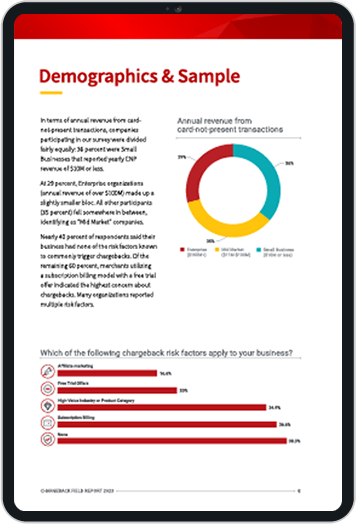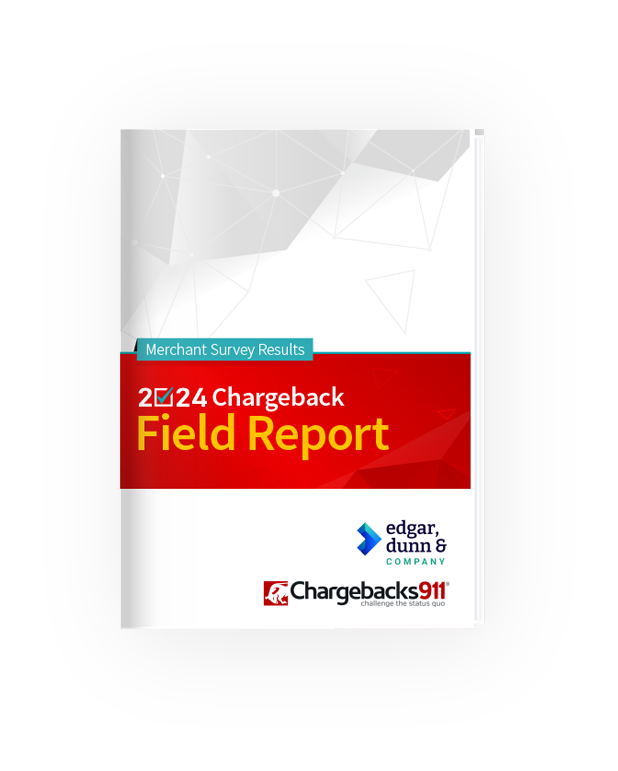What is a Merchant Account & Why Do You Need One?
When you hear the term “merchant,” most people conjure up images of retailers who buy goods from a manufacturer and sell to consumers at a markup.
But, what if you sell club memberships or streaming services? Or run a business where you offer rental of things like hotel rooms or cars? Are you still considered a merchant? For that matter, what exactly is a merchant?
The “merchant” label can be applied to all manner of businesses. The main qualification is providing something of value in exchange for something else of value (usually money). Digging a little deeper, though, we can see that there are some subtle details concerning the “merchant” label.
So in this post, we’re going to take a closer look at merchants, including what they do, and what it means to be one.
Recommended reading
- Prime Day 2024: How to Avoid Chargebacks on the Big Day
- Top 15 Customer Returns Reasons in 2024 & How to Avoid Them
- Online Shopping vs In-Store Shopping: the Future of Retail?
- What is a Return Customer Rate? How to Calculate Your RCR
- eCommerce Order Tracking: Provide the Best CX Possible
- How “Super Apps” May Help Better Serve Your Customers
What is a Merchant?
- Merchant
A merchant is a business entity that sells goods or services, either directly to consumers or to other businesses.
[noun]/mər • CHənt/
In the broadest sense, a merchant can be any person or business that sells or trades goods or services for profit. A merchant may operate online, in the brick-and-mortar space, or a combination of the two. Essentially, if you take payments for goods and services, you can call yourself a merchant.
In the context of the payments industry, though, things are a bit more specific. Here, the term “merchant” refers to a party that holds a merchant account. That may sound like we’re splitting hairs, but not just anyone can open a merchant account… or needs one.
A merchant account is a bank account that is expressly used for accepting payments from your customers. This includes payments classified as card-present (in a physical store) or card-not-present (eCommerce) transactions.
A merchant without a merchant account is limited to accepting cash transactions only. They’ll also be responsible for manually conducting their own bookkeeping for tax and reporting purposes.
What is a Merchant Account?
Merchant accounts aren’t just standard business bank accounts. For example, you can’t write checks from a merchant account.
A merchant account is like a holding account. Its purpose is to hold money you’ve been paid by your customers, until those payments are cleared and the funds can be transferred to your primary business bank account.
Having a merchant account is mandatory if you plan to operate in the eCommerce space. You can’t take cash payments over the internet. So, being able to accept credit and debit cards is going to be central to your operation.
Your merchant account will be with your acquiring bank. Since customers need to be able to trust your payment system, you’ll need to work with a reputable account provider who can maintain security standards and comply with all industry protocols
Merchants do not typically hold funds in their merchant accounts indefinitely. The merchant account is used to receive funds, which are then transferred to a standard bank account.
Merchant Banking vs. Processing
In addition to a merchant account, accepting credit cards also requires a processor or payment gateway. It’s important to understand the difference between these. A merchant processor may offer merchant acquiring services, but the two are not inherently the same thing. Acquirers and payment processors have two distinct roles:
Acquiring Bank:
This is the financial institution responsible for underwriting and receiving payment card transactions.
Payment Processor
This entity acts as a mediator, ensuring smooth communication between the merchant and the cardholder's bank.
Like we mentioned above, a merchant account is where you park the funds from payment card transactions while the bank reconciles the respective accounts. In contrast, a payment processor takes care of payment information and ensures transactions adhere to strict security protocols.
Processors do a lot of work behind the scenes. They authenticate card details, exchange data between parties, and so forth, all while maintaining the confidentiality and security of the data.
Learn more about payment processorsOf course, some providers can offer you multiple different services. Many processors, for instance, also provide merchant acquiring and payment gateway services. This all-in-one approach can ensure seamless compatibility. On the other hand, those benefits often come at the expense of something else, like customization options.
How Does a Merchant Account Work?
Let’s say you’ve got a buyer making a purchase with a payment card. You request and receive authorization from the cardholder’s bank, then submit the transaction for processing. The issuer debits the amount from the cardholder’s account and sends it on to the processor.
After the processor deducts their fee (more on that in a moment), they’ll deposit the final amount into your merchant account. Then, the money just hangs out there until it’s transferred over into the account you use for regular banking.
While it may seem unnecessarily complex, a merchant account is not optional for today’s marketplace. We can’t emphasize this enough: without a merchant account, you can’t accept credit or debit card transactions. Period. For most businesses, that would mean bankruptcy.
How Much Does a Merchant Account Cost?
As mentioned earlier, every party in the transaction chain charges a fee for their services. The acquirer that holds your merchant account is no different. So when you’re shopping around for an account provider, one of the most important things to focus on is the fee schedule.
Multiple different factors determine how much you’ll pay to conduct card sales. Having a good business credit score, for instance, can help you get a better rate. The level of chargeback risk you pose, on the other hand, can go against you.
Certain “high-risk” verticals (gaming, neutraceuticals, adult entertainment, etc.) are all considered inherently risky by banks. They tend to see more fraud and abuse of merchant rules. As a result, acquirers and processors may charge a premium for providing services to sellers in these verticals.

Different merchant account providers may use different methods to calculate their fees. The most common options are:
- Flat Rate: A fixed cost assessed per transaction.
- Interchange-Plus: An interchange-plus transaction fee is a fixed markup charged by the payment processor for each transaction.
- Direct Interchange: A monthly fee not based on any percentage of sales.
- Tiered Rates: The merchant pays a different rate based on the card brand used.
The same factors determining your costs and payment method can also help determine whether a service provider is a good match with your business. There are a number of merchant account providers that specialize in high-risk verticals (for example, check out our post on high-risk account providers).
Other service providers cater to global brands, merchants with smaller sales volumes, or those in specific industries. You should choose one that best fits your business’s unique profile with a fee schedule that works for you.
What Do I Need to Open a Merchant Account?
Let’s go back to our original topic: merchants.
As we explained, being considered a merchant in the eyes of the payments industry means you have a merchant account. So how do you go about getting one?
After you’ve located the acquirer you’d like to use (based on fees and fit), you’ll need to provide some paperwork. Different acquiring banks may require different documentation to validate or verify your business. Here's a breakdown of the basic requirements most providers will likely request:
- Company Information: The foundation of your merchant account is your company's identity. You'll need your company's legal name as a primary identifier.
- Tax ID or Employer Identification Number (EIN): This number is crucial for tax purposes and serves as a unique identifier for your business in financial and legal transactions.
- Contact Information: Providing accurate contact details, including your business address, phone number, and email, is vital for effective communication and account management.
- Financial Information: Your bank account details are necessary for the transfer of funds. Additionally, financial statements might be required to evaluate your business's fiscal stability.
- Business Type & Description: A clear description of your business type and the services or products you offer help in setting up an account that aligns with your business model.
- Estimated Sales Volume: An estimate of your monthly sales volume is important in determining your business's most suitable account type and fee structure.
- Website URL (if applicable): Providing your website URL is important for online businesses for verification and compliance purposes.
- Legal Documents: Depending on the nature and location of your business, you might need to submit legal documents like incorporation certificates or business licenses.
- Credit History: Your business's credit history may be reviewed to assess the risk and determine the terms of your account.
- Proof of Identity: Finally, personal identification documents of the business owner(s), like a driver’s license or passport, are required to verify identity.
Different merchant account providers may have additional requirements. But, these are the general essentials for opening and operating a merchant account. It might help to collect this information before you talk to potential providers.
Merchant Account Providers
Here in the US, a variety of banks offer accounts for merchants. These institutions are responsible for receiving transactions with major card networks. They also manage settlements for various payment facilitators and aggregators, such as Block, Clover, PayPal, and Square, as well as a multitude of independent sales organizations (ISOs).
The fees you’re charged by the bank are typically based on a percentage of your overall transaction volume. Banks usually refer to these as “merchant discount rates.” To see how this can work, let's look at ten of the largest US merchant account providers and check out what specific merchant service fees they charge:
| Acquiring Bank | Annual Transaction Volume (Approx). | Merchant Account Fees |
| Fiserv | 100 billion | *Pass-through plus interchange; no data |
| WorldPay From FIS | 75 billion | Discount rates and per-transaction fees for Visa, Mastercard, and Discover will be assessed an additional 0.0966% and $0.045 per transaction. Transaction Risk Fee for non-qualified, mid-qualified, and high-risk rates will be assessed an additional 0.15%. |
| Global Payments | 50 billion | Flat-rate plus interchange; 2.9% + $0.29 per transaction |
| JP Morgan Chase | 31 billion | $1.80 interchange fee 90% of total fee. Assessed by the payment network to cover the risk and cost of a card transaction. 7% $0.14 network (switch) fee 7% of total fee. Assessed by the payment network for its use. 3% $0.06 processor fee 3% of total fee. Assessed by a merchant services provider for authorization, settlement, chargebacks, reporting, and customer service |
| Wells Fargo | 7.7 billion | 3.1% plus 15 cents and up for online transactions; 2.2% plus 15 cents and up for in-person transactions; 3.1% plus 15 cents and up for manually keyed transactions; 2.4% plus 20 cents and up for in-person B2B transactions; 3.5% plus 20 cents and up for online or manually keyed B2B transactions |
| Bank of America | 8.7 billion | 2.65% + $0.10 per swiped, dipped, or tapped transaction (card-present) 2.99% + $0.30 per eCommerce transaction. 3.50% + $0.10 per keyed-in/virtual terminal transaction |
| Merrick Bank | 6 billion | Swiped Rate 2.5% + $0.20, 3.5% + $0.20, $75.20 Per Year ($18.80 charged each quarter), Equipment Lease Terms 48 Month (locked), Early Termination Fee 1% of Gross Volume |
| Elavon | 5 billion | 0.16% + $0.25 per transaction. $0.25 per transaction authorization. 0.60% per international transaction. $0.40 per settled batch |
| Paysafe | N/A (~$120 billion each year) | 2.9% plus 30 cents for online transactions or invoices without a card on file (2.6% plus 30 cents with Premium plan) |
| North American Bancard | N/A (~$45 billion each year) | Flat-rate plus interchange; 0.29 percent per transaction |
Can My Merchant Account be Canceled?
So, you’ve weighed your options, and managed to secure support from a merchant service provider. You’re all set to start operating like a proper merchant now… right?
Well, yes, but your work isn’t over yet. Now, you have to put effort into protecting your merchant account. This means complying with the requirements imposed by your account provider, as well as other entities like Visa and Mastercard.
By agreeing to do business with you, an acquirer is taking on a degree of liability. Specifically, they accept the risk of funds reversals, in the form of payment disputes and chargebacks, if you are unable to cover your liabilities.
Naturally, acquirers will seek to limit their outgoing expenses and risk by limiting problematic merchant accounts. Merchants that consistently breach the fraud or chargeback thresholds set by Visa and Mastercard will have restrictions imposed on their accounts. They may even have their merchant account frozen or terminated altogether.
Concerned that chargebacks could put your merchant status in jeopardy? Don’t worry — Chargebacks911® is here to help. Contact us today to learn more.
FAQs
What is the definition of a merchant?
A merchant is a person or company engaged in selling goods or services. In the context of the payments industry, a merchant is a party that holds a merchant account.
Is the merchant the buyer or seller?
In a transaction, the merchant is the seller offering goods or services.
Who would be considered the merchant?
If you accept card payments in exchange for goods or services, you qualify as a merchant.
What is the difference between a vendor and a merchant?
A vendor is a broad term that refers to any individual or company selling goods or services, often including wholesalers and suppliers. A merchant, on the other hand, specifically describes a retail seller who provides goods or services directly to consumers, and which holds a merchant account with an acquiring bank.













